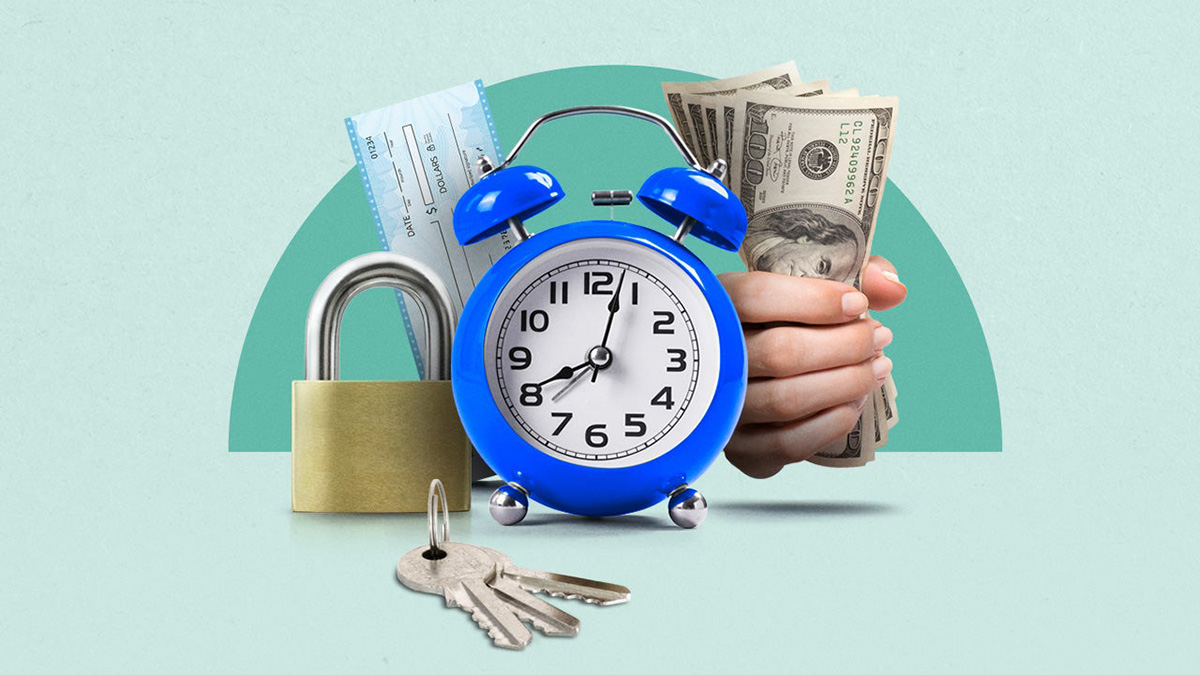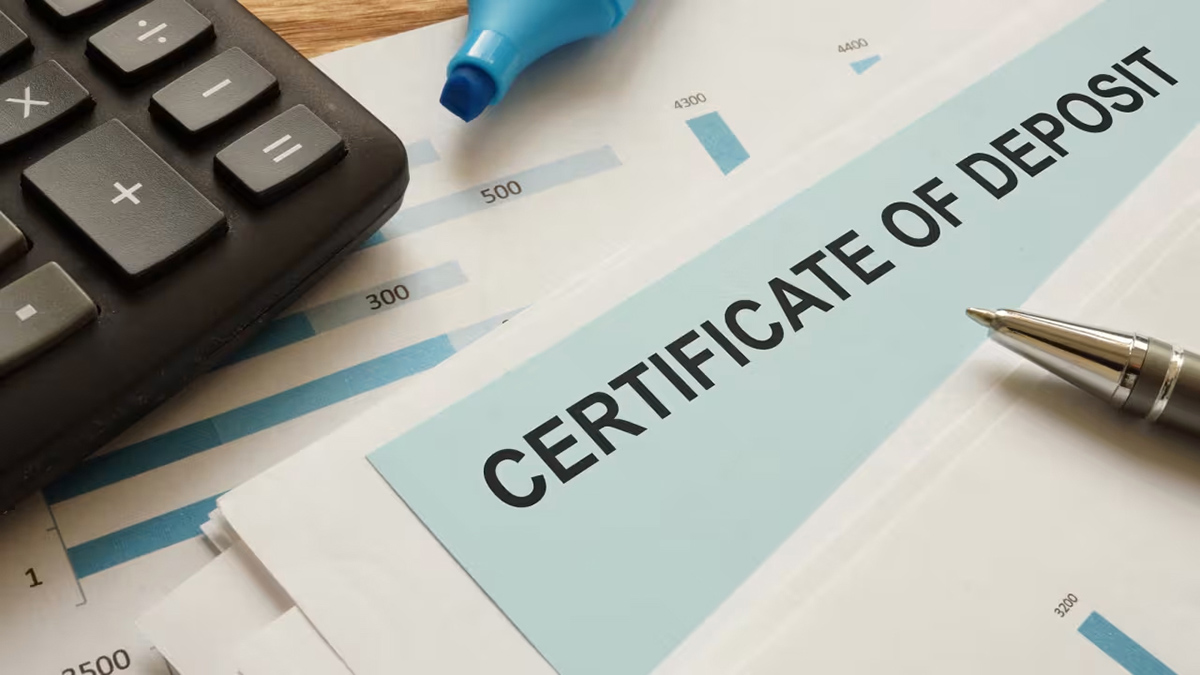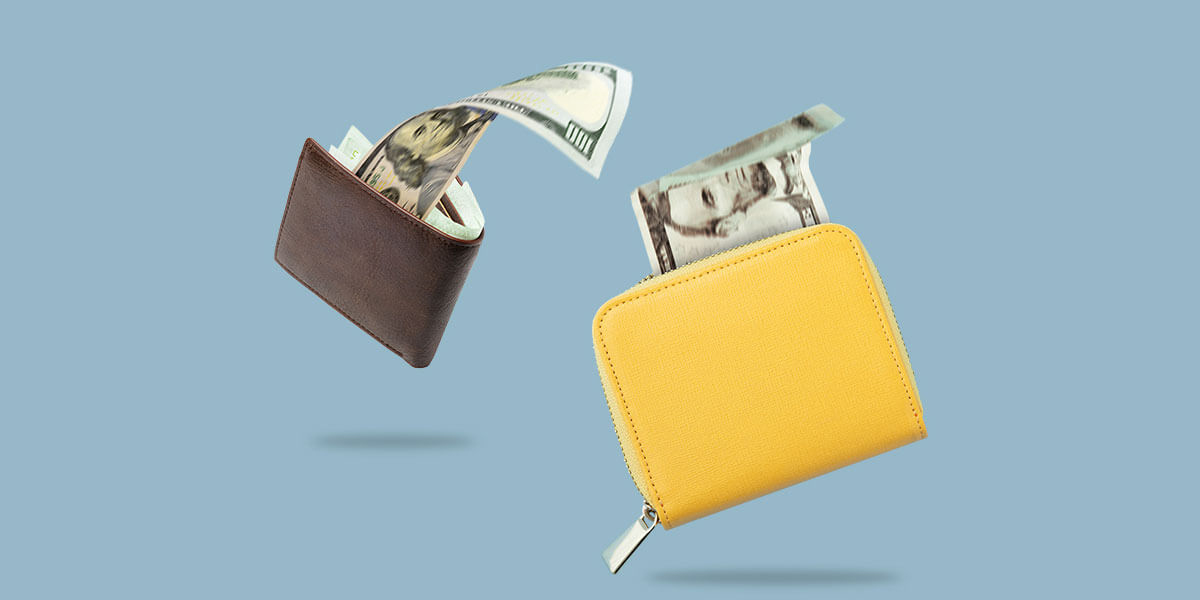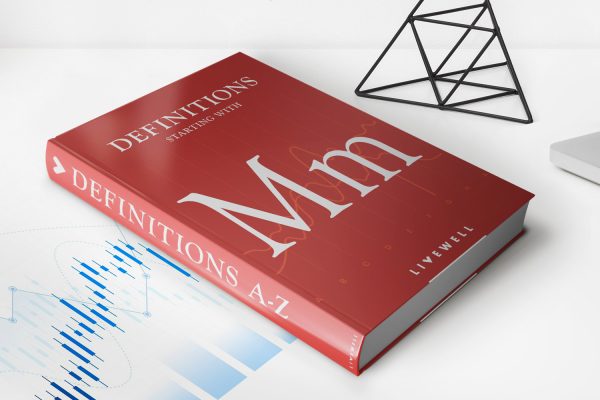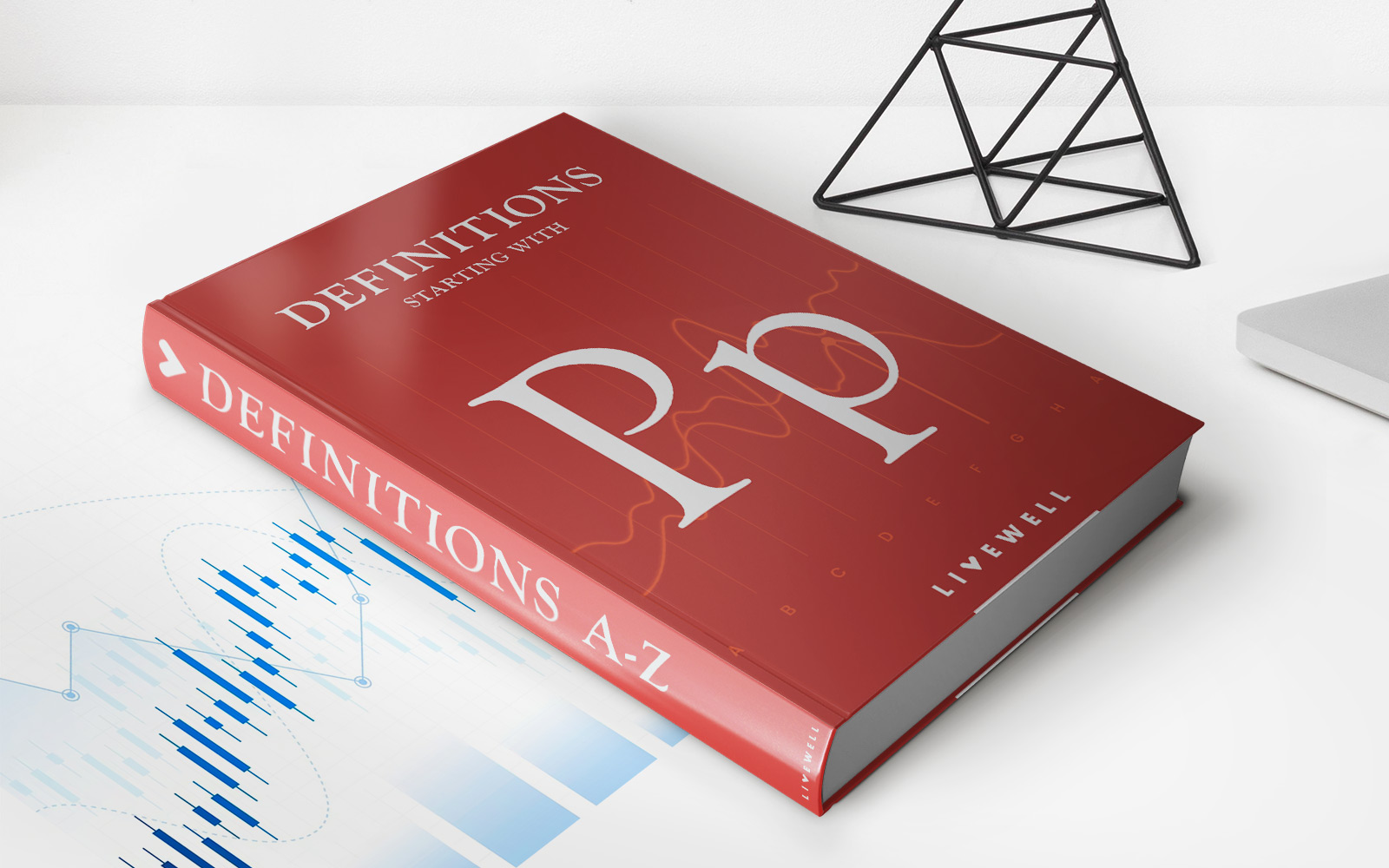Home>Finance>What Does 1.40 % Interest Mean In A Certificates Of Deposit


Finance
What Does 1.40 % Interest Mean In A Certificates Of Deposit
Modified: December 29, 2023
Discover what a 1.40% interest rate in a Certificates of Deposit means for your finances. Maximize your earning potential with this secure investment option.
(Many of the links in this article redirect to a specific reviewed product. Your purchase of these products through affiliate links helps to generate commission for LiveWell, at no extra cost. Learn more)
Table of Contents
- Introduction
- Understanding Certificates of Deposit (CDs)
- What is Interest Rate?
- What Does 1.40% Interest Mean?
- Benefits of Investing in CDs with 1.40% Interest
- Considerations for Investing in CDs with 1.40% Interest
- Comparison with Other CD Interest Rates
- Strategies for Maximizing Returns on CDs with 1.40% Interest
- Conclusion
Introduction
When it comes to investing, finding the right opportunities that offer both security and returns can be a challenge. One option that many investors consider is a Certificate of Deposit (CD). CDs are a popular investment choice because they offer a fixed interest rate for a specific term, providing a stable and predictable return.
Understanding the intricacies of CDs is crucial in making informed investment decisions. One key aspect of CDs is the interest rate. The interest rate determines how much additional income an investor can earn on their investment. It is important to analyze this rate in detail to fully grasp the potential benefits and implications.
In this article, we will dive into the meaning and implications of a 1.40% interest rate on a Certificate of Deposit. We will explore the benefits and considerations of investing in CDs with this interest rate, compare it to other CD rates, and discuss strategies for maximizing returns. Whether you are a seasoned investor or just starting, understanding the nuances of CD interest rates can help you make smarter investment choices.
Understanding Certificates of Deposit (CDs)
Certificates of Deposit, or CDs, are a type of fixed-term deposit offered by banks and credit unions. They are considered a low-risk investment option as they provide a guaranteed return at a fixed interest rate for a specific period of time. CDs are often chosen by conservative investors who prioritize the safety of their money over high-risk investments.
When you invest in a CD, you agree to keep your money with the financial institution for a predetermined term, typically ranging from a few months to several years. During this duration, you are unable to withdraw your funds without incurring penalties. In return for this commitment, you receive a higher interest rate compared to a regular savings account.
The interest rate on a CD is determined by various factors, including the current economic conditions, the term length, and the amount of money invested. Banks and credit unions set their own interest rates for CDs, which can vary among different financial institutions. The interest earned on a CD can be compounded and added to the principal, or it can be paid out at regular intervals. This interest is usually subject to taxes.
CDs come in different types, including traditional CDs, jumbo CDs (for larger investments), and bump-up CDs (that allow for a one-time interest rate increase during the term). It’s important to carefully consider the terms and conditions of different CDs before choosing the one that suits your financial goals and risk tolerance.
Overall, CDs offer a safe and predictable investment option for individuals looking to earn a fixed return on their money. The underlying principle of CDs is that the longer the term and the higher the interest rate, the more you can potentially earn on your investment. Now, let’s move on to understanding the concept of interest rates within CDs and specifically focus on a 1.40% interest rate.
What is Interest Rate?
Interest rate is the percentage of interest that is applied to an investment, loan, or deposit over a specific period of time. It is essentially the cost of borrowing money or the reward for lending money. In the context of Certificates of Deposit (CDs), the interest rate determines the additional income you can earn on your investment.
Interest rates are influenced by various factors, including the central bank’s monetary policy, inflation rates, and overall market conditions. When the economy is strong and inflation is low, interest rates tend to be higher. Conversely, when the economy is struggling, interest rates are typically lower to incentivize borrowing and stimulate economic growth.
In the case of CDs, the interest rate is set by the financial institution offering the CD. This rate remains fixed for the duration of the CD term, regardless of any changes in the broader market. This gives investors the benefit of a predictable return on their investment.
The interest rate on a CD is expressed as an annual percentage rate (APR) and can be simple or compounded. With simple interest, the interest is calculated only on the initial amount you invest (the principal). Compounded interest, on the other hand, takes into account the interest earned and adds it back to the principal periodically, resulting in higher overall returns.
It’s important to note that interest rates can vary significantly depending on the type of CD and the financial institution. Different banks and credit unions may offer different rates, so it’s essential to shop around and compare options to ensure you’re getting the best rate for your investment.
Now that we understand what an interest rate is, let’s delve into what a 1.40% interest rate means in the context of a Certificate of Deposit.
What Does 1.40% Interest Mean?
A 1.40% interest rate on a Certificate of Deposit signifies the annual percentage yield (APY) that you will earn on your investment. This means that for every dollar you invest in the CD, you will earn 1.40 cents of interest each year.
Let’s break down what this interest rate means in practical terms. Suppose you invest $10,000 in a CD with a 1.40% interest rate for a one-year term. At the end of the year, you would earn $140 in interest. This additional income is earned on top of your initial investment, providing you with a total of $10,140 at the end of the term.
While a 1.40% interest rate may not seem high compared to other investment options, it offers certain advantages. Firstly, CDs are known for their stability and safety, as they are insured by the Federal Deposit Insurance Corporation (FDIC) for up to $250,000 per depositor, per institution. This means that even if the financial institution fails, you will still receive your investment plus accrued interest (up to the insured amount).
Secondly, a fixed interest rate of 1.40% allows you to plan and budget your earnings with certainty. Unlike investments subject to market fluctuations, the return on a CD remains consistent throughout the term.
On the flip side, it’s important to consider that a 1.40% interest rate may not fully keep up with inflation. Inflation reduces the purchasing power of money over time, meaning that the value of your earnings may decrease relative to the cost of goods and services. However, CDs can still serve as a reliable way to preserve capital and generate modest returns.
Investing in a CD with a 1.40% interest rate may be particularly appealing for individuals looking for a low-risk option for their savings or those who have a short-term financial goal in mind. It’s crucial to assess your own financial needs and objectives when deciding whether a 1.40% interest rate on a CD aligns with your investment strategy.
Now that we’ve explored the meaning of a 1.40% interest rate, let’s move on to examine the benefits of investing in CDs with this rate.
Benefits of Investing in CDs with 1.40% Interest
Investing in Certificates of Deposit (CDs) with a 1.40% interest rate offers several benefits for investors. While this rate may not be the highest available, it provides advantages that make it an attractive option for certain individuals. Let’s explore some of the key benefits:
- Stability and Security: CDs are known for their stability and are considered low-risk investments. With a fixed interest rate, you can rely on a predictable return on your investment. Moreover, CDs are typically insured by the Federal Deposit Insurance Corporation (FDIC) for up to $250,000 per depositor, per institution, providing an extra layer of security.
- Preservation of Capital: Investing in a CD with a 1.40% interest rate allows you to preserve your capital. Unlike riskier investments such as stocks or bonds, the principal amount you invest is not subject to market volatility. You can have peace of mind knowing that your initial investment is protected.
- Regular Income Stream: When you invest in a CD, you can choose to have your interest paid out at regular intervals (e.g., monthly, quarterly, or annually) or at maturity. This provides you with a steady income stream that can be especially beneficial for retirees or those seeking a passive income source.
- Flexibility in Term Length: CDs are available in various term lengths, ranging from a few months to several years. With a 1.40% interest rate, you have the flexibility to choose a term that aligns with your financial goals. Whether you have a short-term goal in mind or want to invest for the long haul, there are options available to suit your needs.
- Liquid Options: While it is generally advisable to hold a CD until maturity to benefit from the full interest, there are options for early withdrawal if needed. Some banks offer CDs with a “no-penalty” feature that allows you to access your funds without incurring a penalty fee. This provides you with some liquidity in case of emergencies or unforeseen financial needs.
Despite the benefits, it’s important to note that investing in a CD with a 1.40% interest rate may not be suitable for everyone. If you have a higher risk tolerance or are seeking higher returns, you may want to explore other investment options. Additionally, if inflation rates rise significantly, the purchasing power of your returns may be eroded to some extent.
Now that we’ve discussed the benefits of investing in CDs with a 1.40% interest rate, let’s move on to considerations you should keep in mind before investing.
Considerations for Investing in CDs with 1.40% Interest
While investing in Certificates of Deposit (CDs) with a 1.40% interest rate can offer stability and preservation of capital, it’s important to consider certain factors before making your investment decision. Here are some key considerations to keep in mind:
- Opportunity Cost: The 1.40% interest rate on a CD may be lower compared to other investment options, such as stocks or bonds, which have the potential for higher returns. It’s essential to weigh the potential returns of other investments against the security and predictability of a CD and determine whether the lower interest rate aligns with your financial goals.
- Lock-in Period: When you invest in a CD, you commit to keeping your money with the financial institution for a specific term, typically ranging from a few months to several years. With a 1.40% interest rate, you need to consider how long you are willing to have your funds tied up and whether you may need access to that money before the CD’s maturity date.
- Inflation Risk: While CDs offer stability, the interest earned may not always keep up with inflation rates. If the rate of inflation in the economy surpasses the interest rate on your CD, the purchasing power of your returns may decrease over time. It’s important to assess the current and potential future inflation rates and consider how it may impact your investment’s real value.
- Alternative Investment Opportunities: Depending on your risk tolerance and investment objectives, you may find that other investment options offer better potential returns. While CDs provide security and fixed returns, higher-risk investments like stocks or real estate have the potential for higher rewards. Consider your individual financial situation and goals before deciding whether a CD is the best option for you.
- Penalty for Early Withdrawal: While withdrawing your funds from a CD before it reaches maturity is possible, it often comes with penalty fees. These fees can vary depending on the financial institution and the terms of your CD. If you anticipate needing access to your funds before the CD’s maturity, be aware of the penalties that may be imposed.
By carefully considering these factors, you can make an informed decision about investing in CDs with a 1.40% interest rate. It’s crucial to align your investment choices with your financial goals, risk tolerance, and liquidity needs.
Next, let’s compare a 1.40% interest rate on a CD to other interest rates that may be available in the market.
Comparison with Other CD Interest Rates
When considering investing in a Certificate of Deposit (CD) with a 1.40% interest rate, it’s important to compare it to other CD interest rates available in the market. By doing so, you can assess whether the 1.40% rate is competitive and aligned with your investment objectives. Here’s a comparison to help you evaluate the offer:
1. Higher Interest Rates: Some banks and credit unions may offer CDs with higher interest rates than the 1.40% rate. These higher rates can provide you with the opportunity to earn more on your investment over the same term. It’s worth researching and comparing rates across different financial institutions to see if there are better options available.
2. Lower Interest Rates: On the other hand, there may be CDs with lower interest rates than 1.40%. While these rates may not be as attractive, they could still be worth considering if the institution offers additional benefits or features, such as flexible withdrawal options, lower minimum deposit requirements, or loyalty rewards.
3. Special Promotions: Financial institutions sometimes offer promotional CD rates for a limited time. These rates may be higher than the standard rates and can be a great opportunity to secure a better return on your investment. Keep an eye out for any special promotions and consider taking advantage of them if they align with your financial goals.
4. CD Ladder Strategies: Another approach to consider is implementing a CD ladder strategy. This involves dividing your investment across CDs with different term lengths and interest rates. By doing so, you can take advantage of higher rates on longer-term CDs while still maintaining some liquidity with shorter-term CDs. This strategy helps ensure a steady income stream and the potential to benefit from rising interest rates in the future.
It’s important to note that interest rates are subject to change based on market conditions and other external factors. Therefore, it’s essential to stay informed about current rates and revisit your investment strategy periodically to maximize your returns.
By comparing the 1.40% interest rate to other CD rates and exploring various strategies, you can make an informed decision about which CD best suits your financial goals and risk tolerance.
Now, let’s explore some strategies for maximizing returns on CDs with a 1.40% interest rate.
Strategies for Maximizing Returns on CDs with 1.40% Interest
While a 1.40% interest rate on a Certificate of Deposit (CD) may not be the highest available, there are strategies you can employ to maximize your returns. These strategies can help you make the most of your investment and potentially increase your overall earnings. Here are some effective strategies to consider:
- CD Laddering: One popular strategy is to implement a CD ladder. This involves dividing your investment across multiple CDs with different maturity dates. By staggering the terms of your CDs, you can take advantage of higher interest rates on longer-term CDs while maintaining access to a portion of your funds at regular intervals. As each CD matures, you have the option to reinvest it in a higher-interest-rate CD or use the funds as needed.
- Research and Compare: Take the time to research and compare CD rates offered by different financial institutions. While a 1.40% interest rate may be available at one bank, another institution might offer a higher rate for the same term. Shopping around and finding the best rates can significantly impact your overall returns.
- Consider Bump-Up CDs: Bump-up CDs give you the option to increase your interest rate to a higher level if rates go up during the term of your CD. While the initial rate may be lower than other CDs, this flexibility allows you to take advantage of potential interest rate increases without penalty.
- Reinvest Interest: Instead of opting for regular interest payments, consider reinvesting the interest back into the CD. Compounded interest can greatly boost your overall returns over time. By reinvesting the interest, you take advantage of compounding and potentially earn more on your initial investment.
- Monitor the Market: Stay updated on current market conditions and interest rate trends. If rates are expected to rise, it might be beneficial to invest in shorter-term CDs and wait for rates to increase before locking your funds into longer-term CDs. Conversely, during periods of falling rates, longer-term CDs can provide you with a higher fixed rate before rates drop further.
- Consider Special CD Offers: Be on the lookout for special promotions or limited-time offers from financial institutions. These special CD offers may come with higher interest rates or additional benefits that can enhance your returns. Take advantage of these opportunities when they align with your investment goals.
By implementing these strategies, you can optimize your returns and make the most of a 1.40% interest rate on your CDs. However, it’s important to weigh the potential benefits against your individual financial goals and risk tolerance. Remember to thoroughly evaluate the terms and conditions of each CD before making any investment decisions.
Lastly, let’s conclude our discussion on CDs with a brief summary.
Conclusion
Investing in Certificates of Deposit (CDs) with a 1.40% interest rate can provide stability, security, and a predictable return on your investment. While the 1.40% rate may not be the highest available, it offers unique benefits that make it a compelling choice for certain investors.
CDs with a 1.40% interest rate provide stability and preservation of capital, making them an ideal option for risk-averse individuals and those with short-term financial goals. The guaranteed return and FDIC insurance coverage add an extra layer of security to your investment. Additionally, the regular income stream from interest payments can be beneficial for retirees or those seeking passive income sources.
However, it is important to consider certain factors before investing. Compare the 1.40% interest rate to other CD rates available in the market and explore strategies like CD laddering to maximize your returns. Keep an eye on market conditions and stay informed about changes in interest rates.
Ultimately, the decision to invest in CDs with a 1.40% interest rate depends on your individual financial goals, risk tolerance, and liquidity needs. Evaluate your options carefully and choose the investment strategy that aligns with your requirements.
Remember, investing involves risks, and it’s advisable to consult with a financial advisor or professional before making any investment decisions. With thorough research and careful planning, investing in CDs with a 1.40% interest rate can be a valuable addition to your overall investment portfolio.
By understanding the intricacies of CDs, interest rates, and implementing effective strategies, you can make informed decisions and navigate the world of investments with confidence.
